Frankenstein Horror Movie Poster Wall Art & Canvas Prints
Frankenstein Horror Movie Poster Wall Art & Canvas Prints
Couldn't load pickup availability
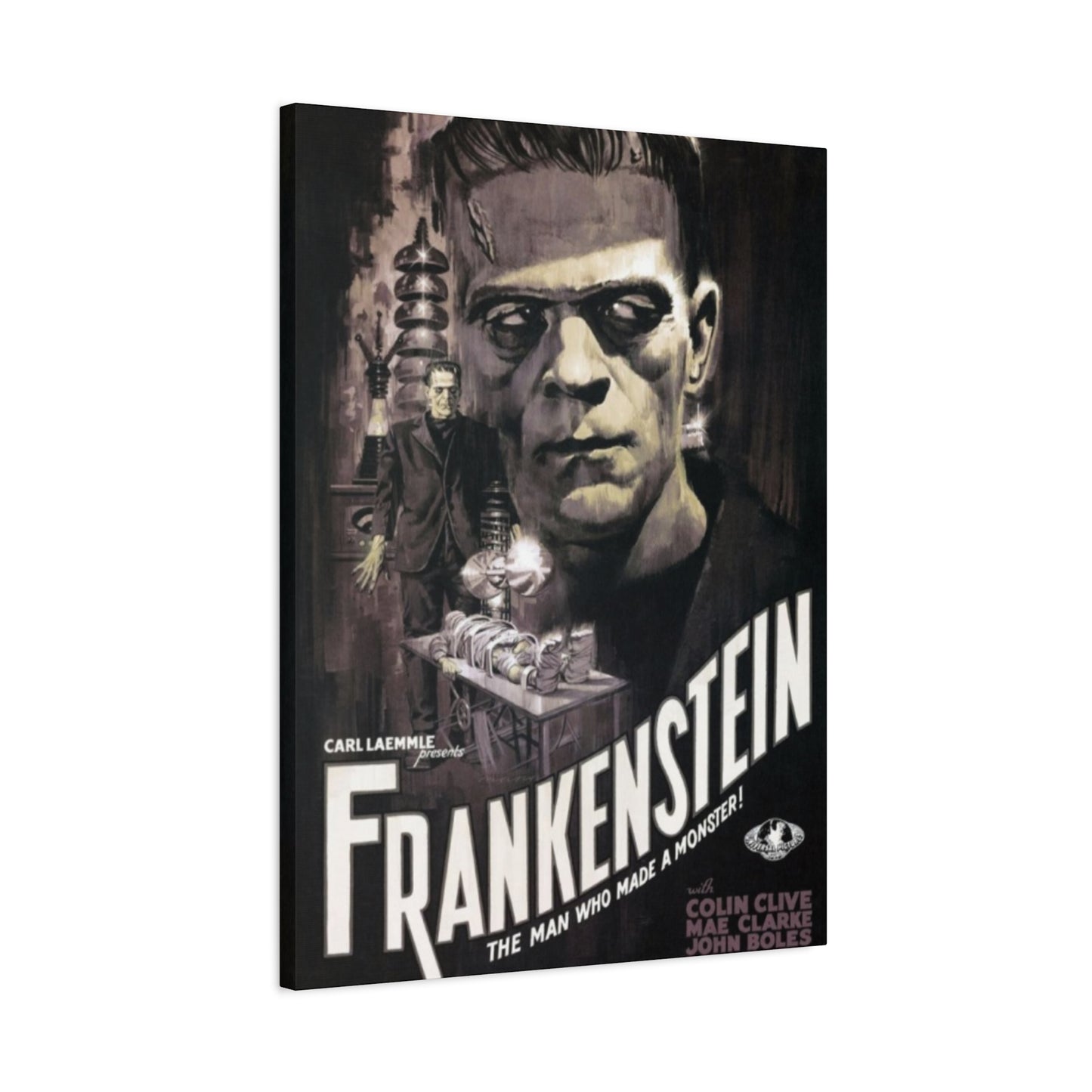
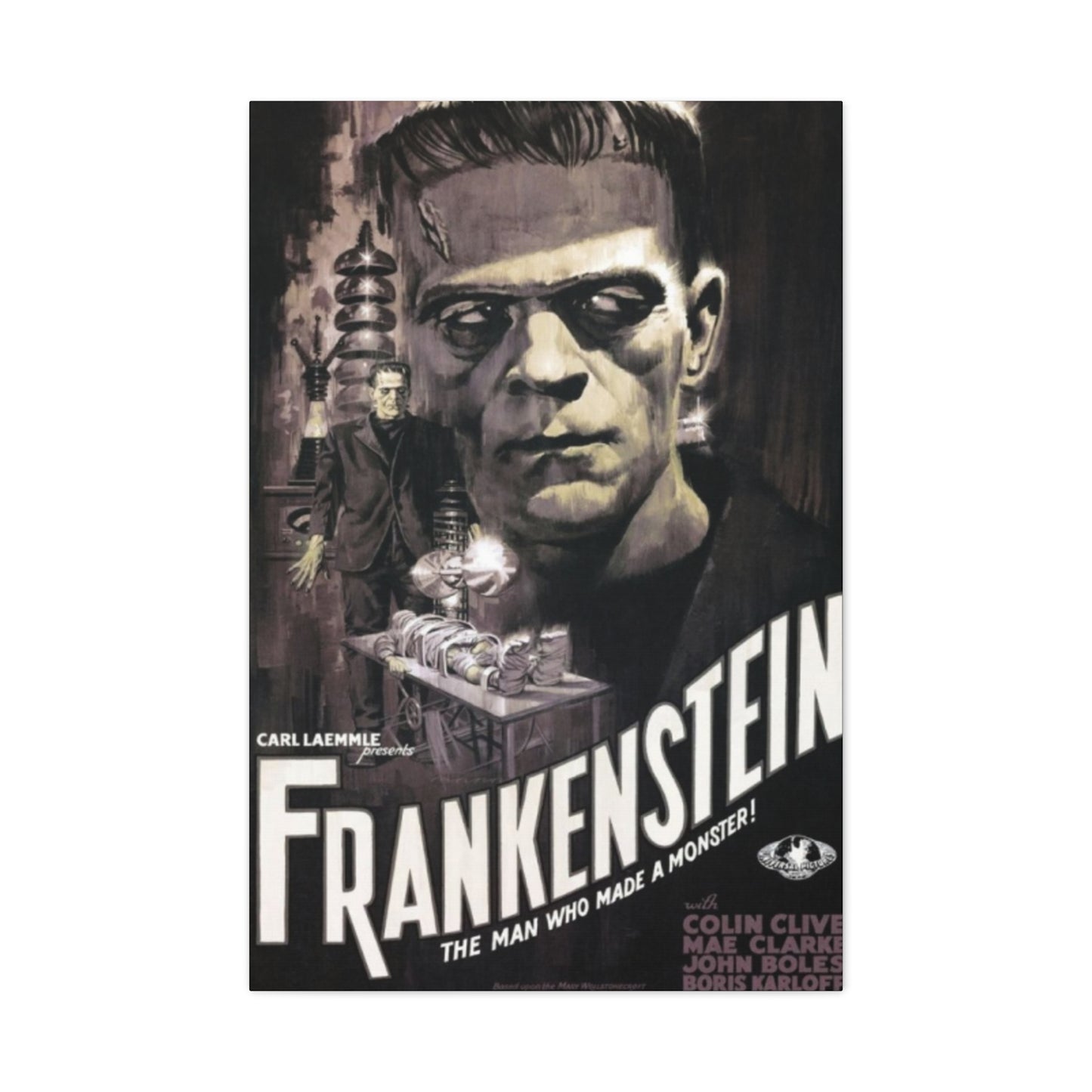
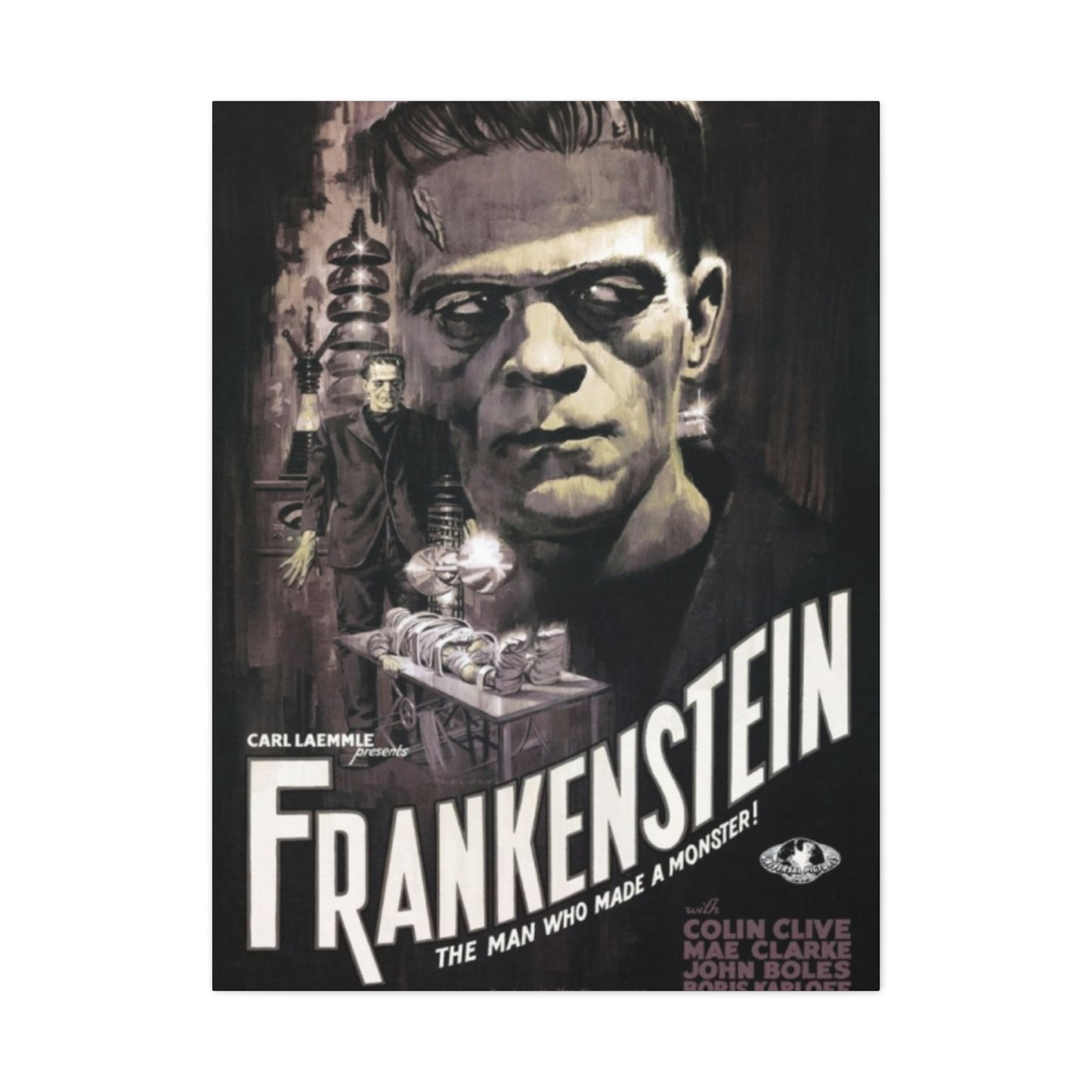

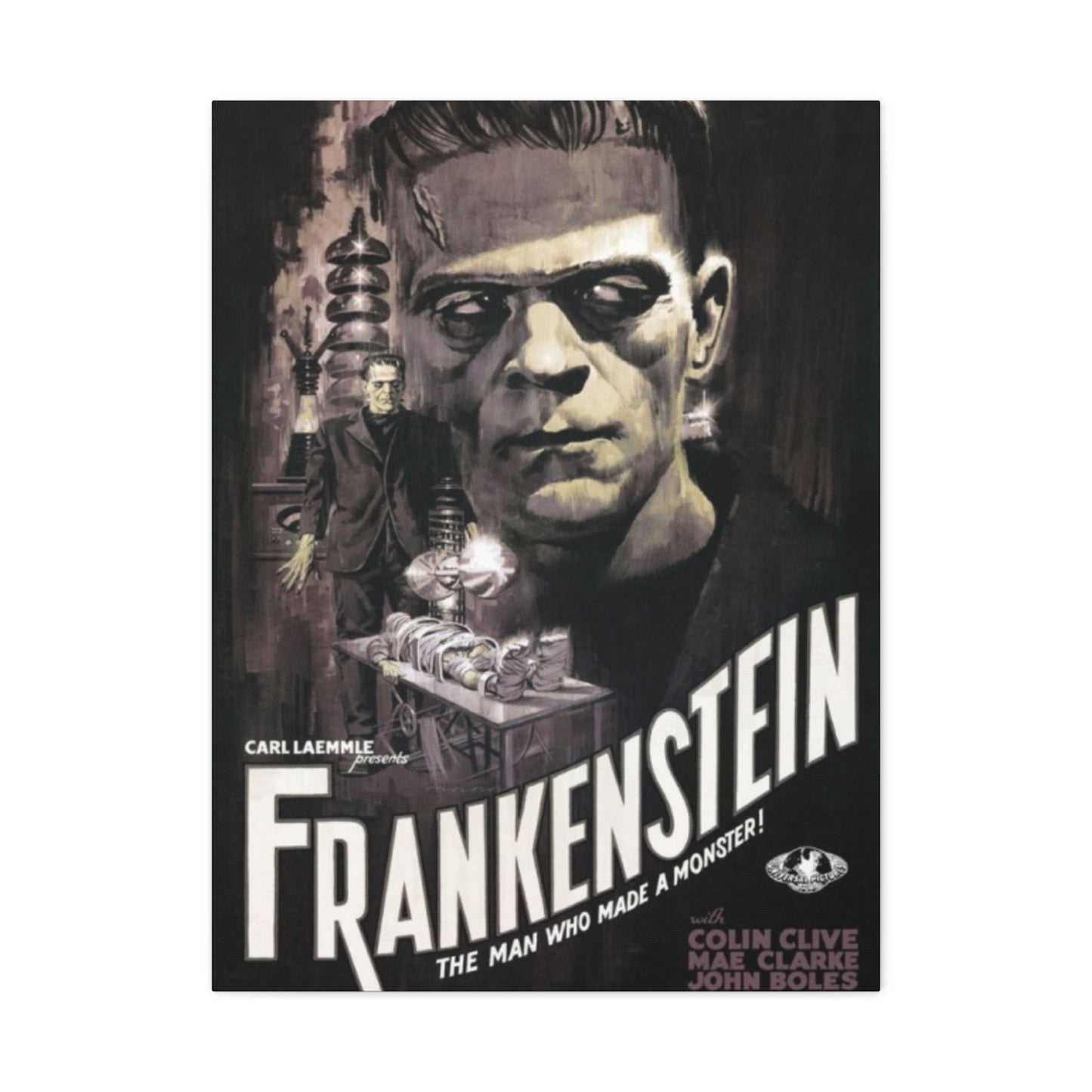

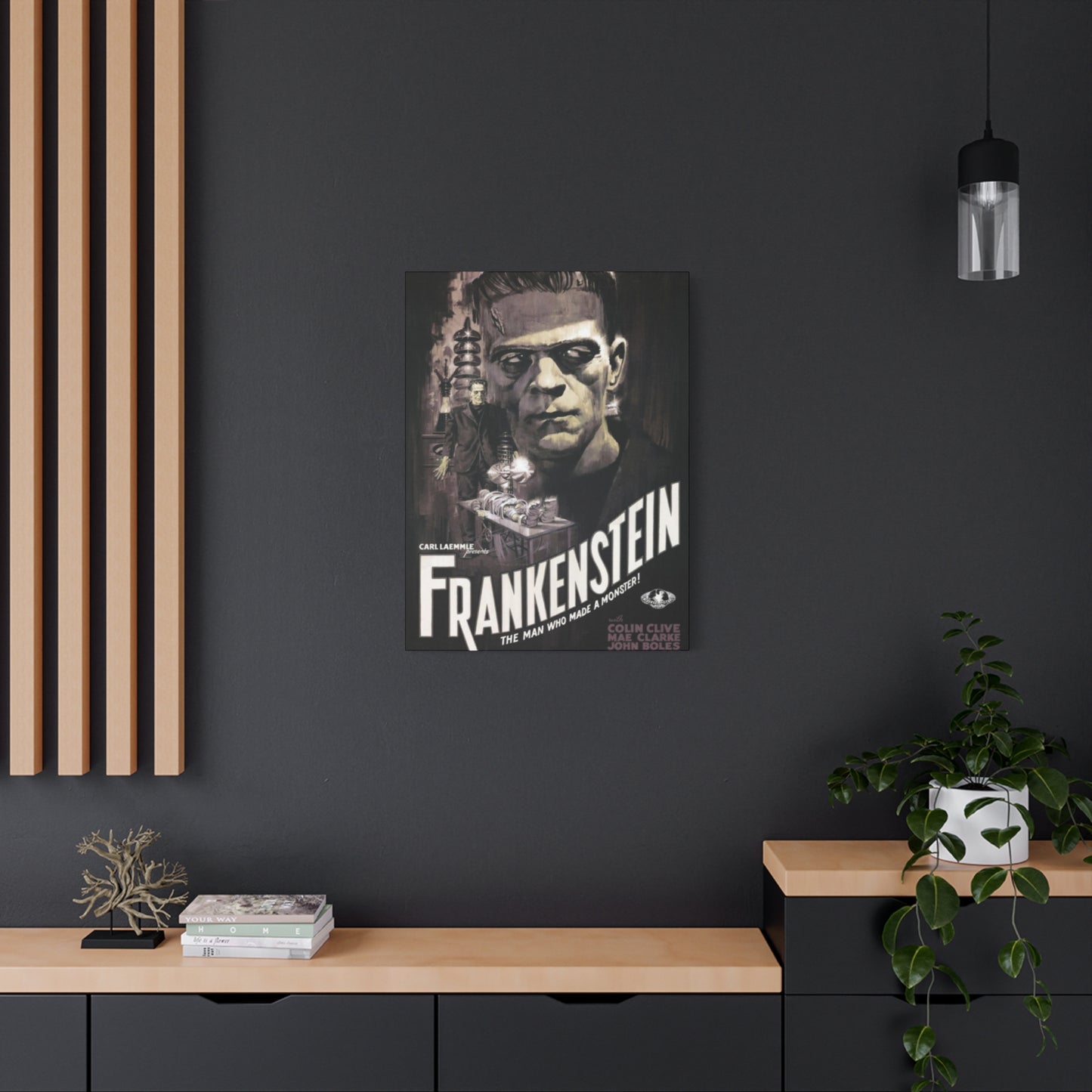
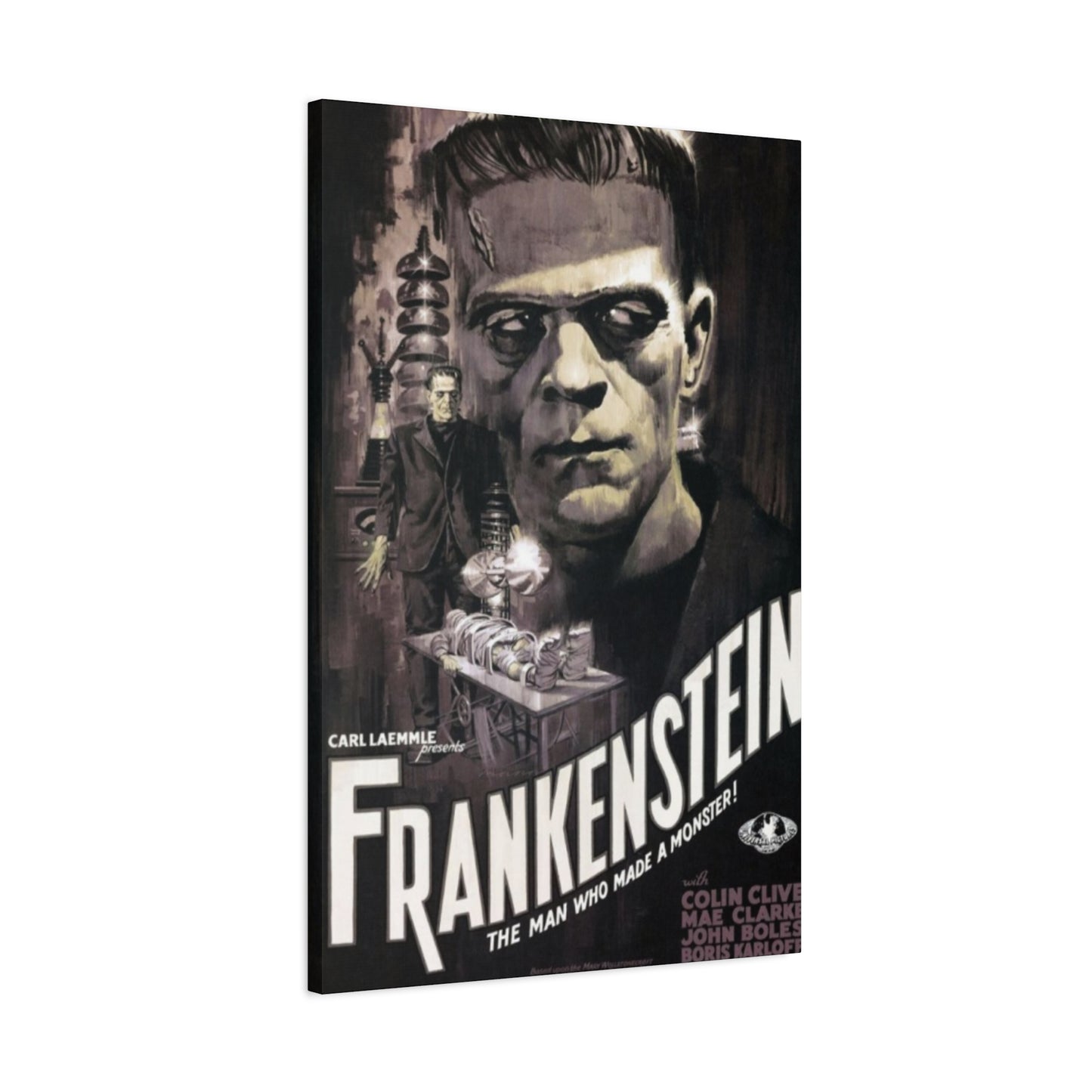


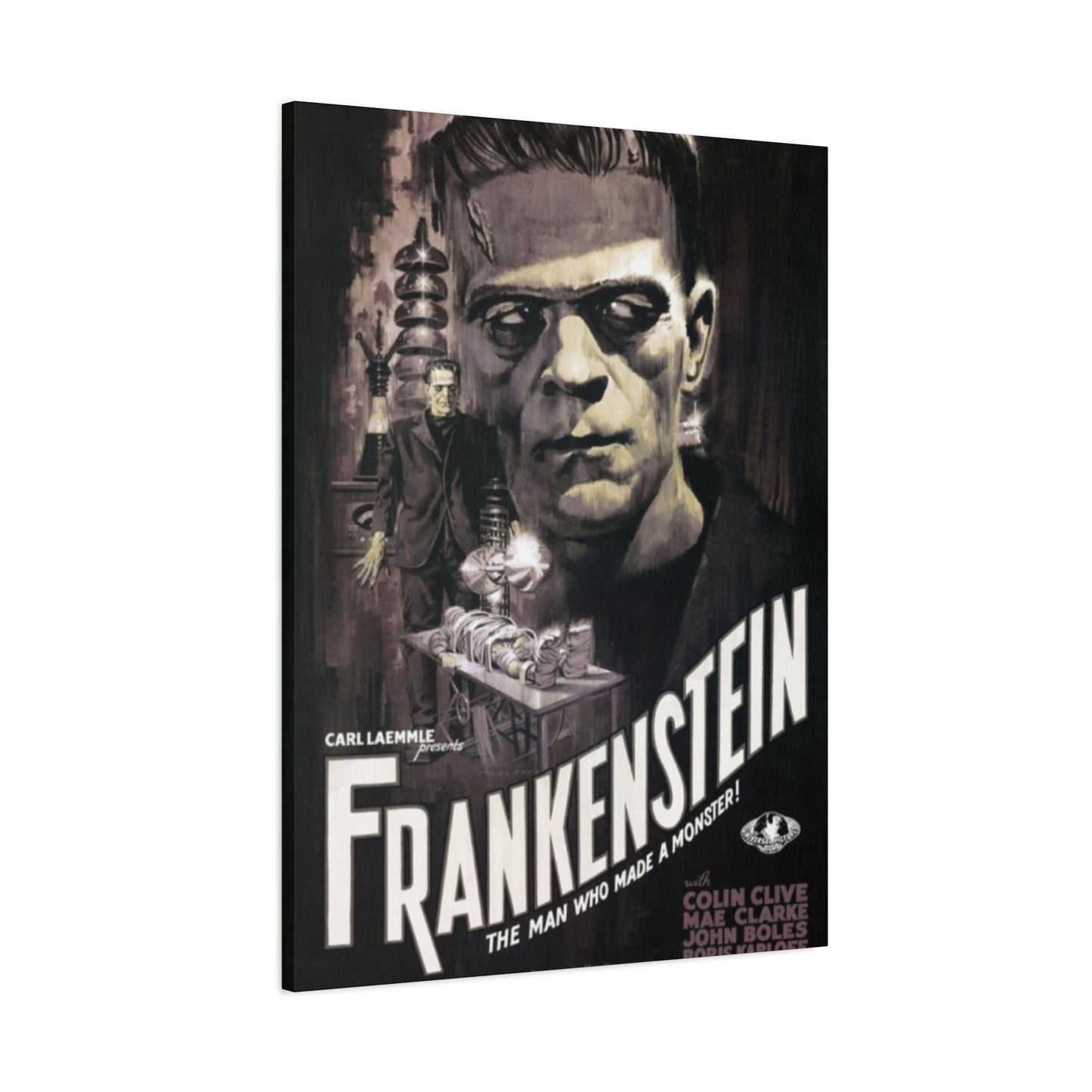
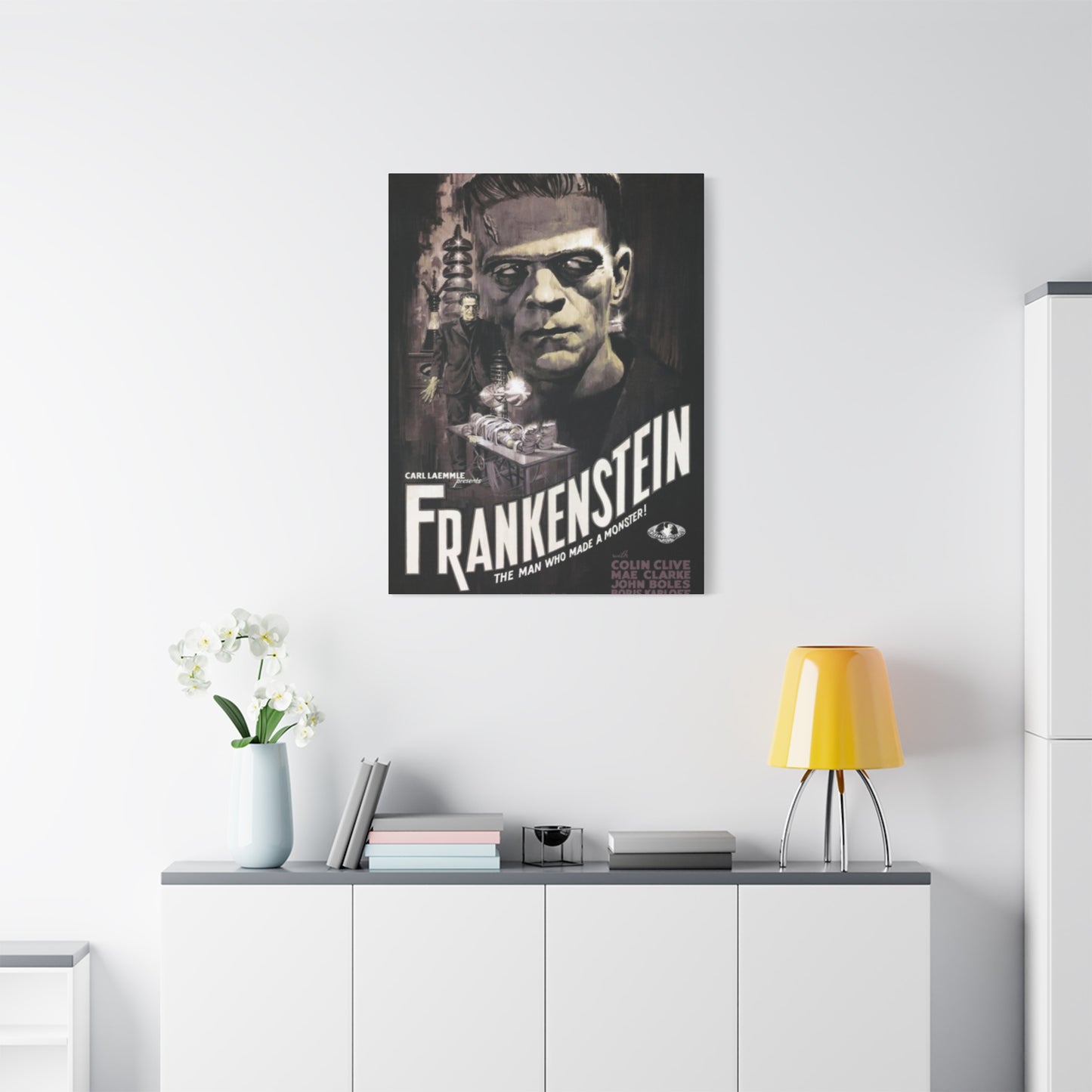
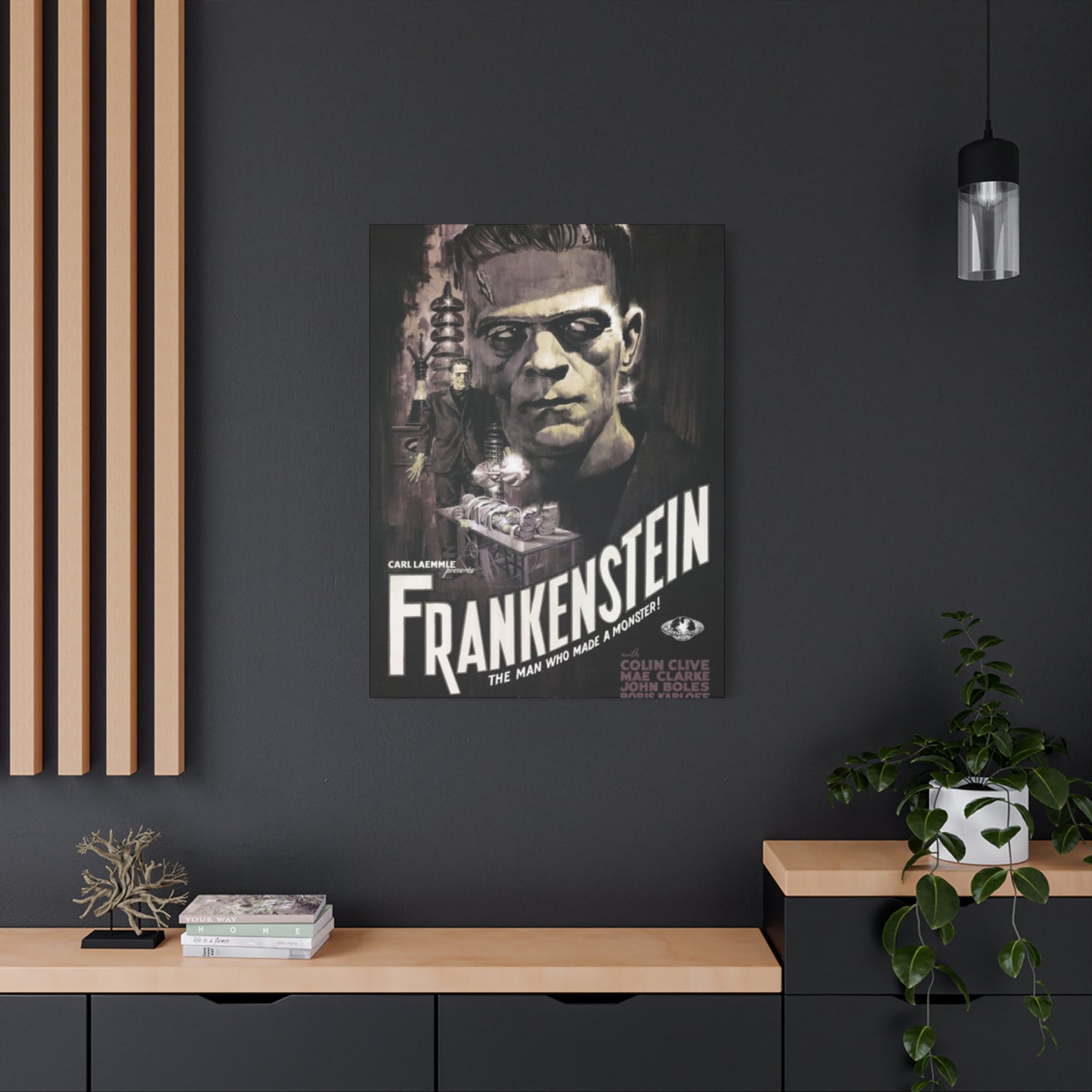
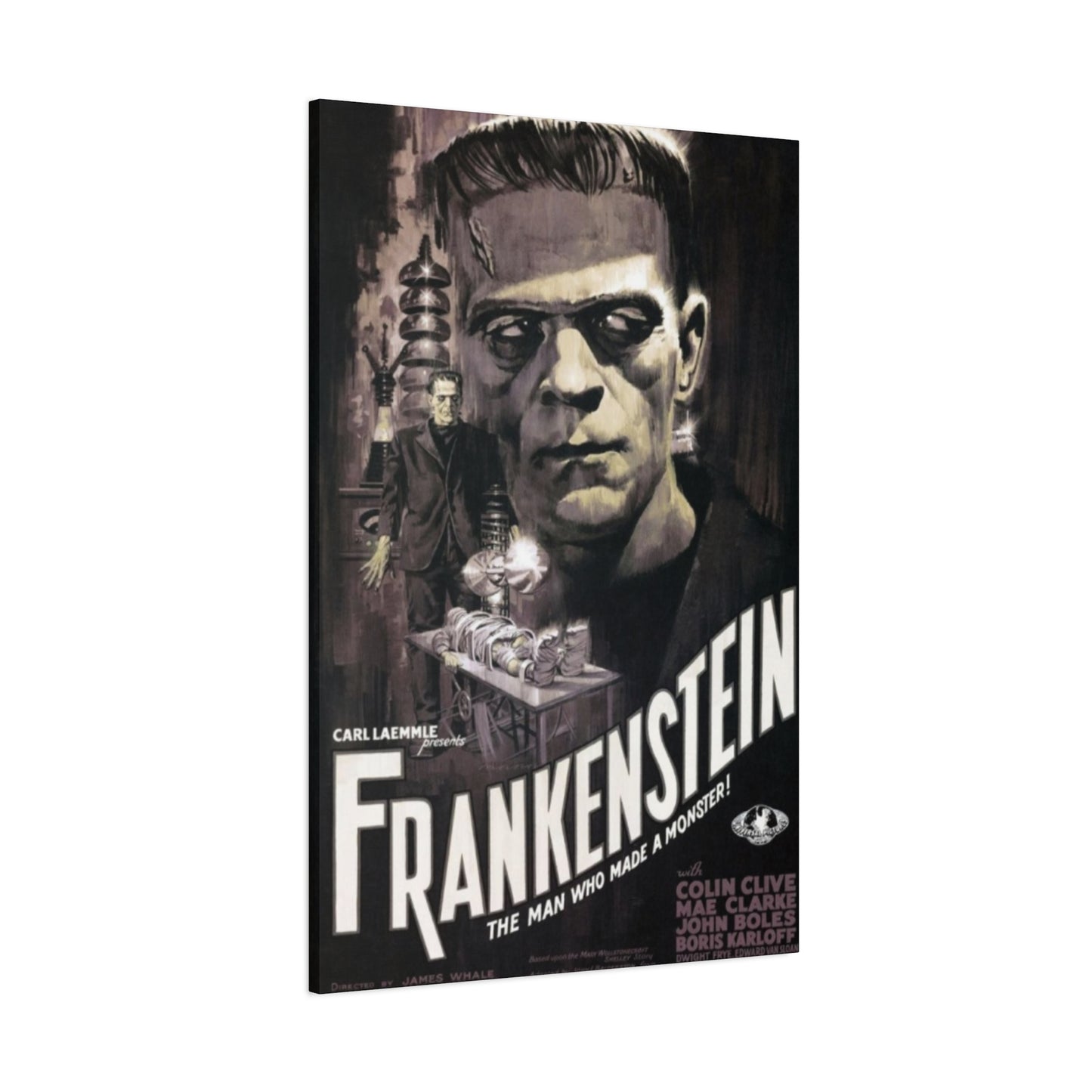
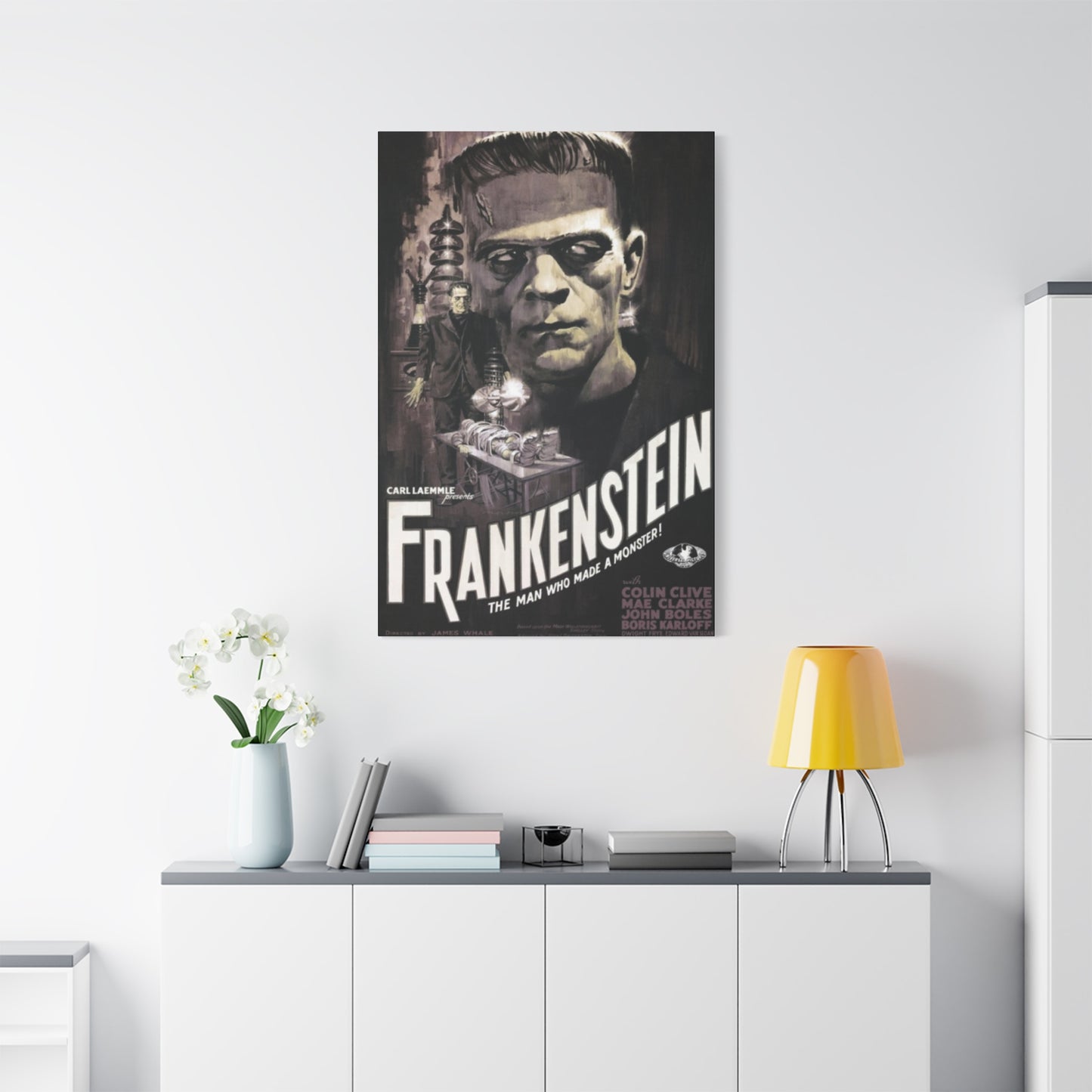
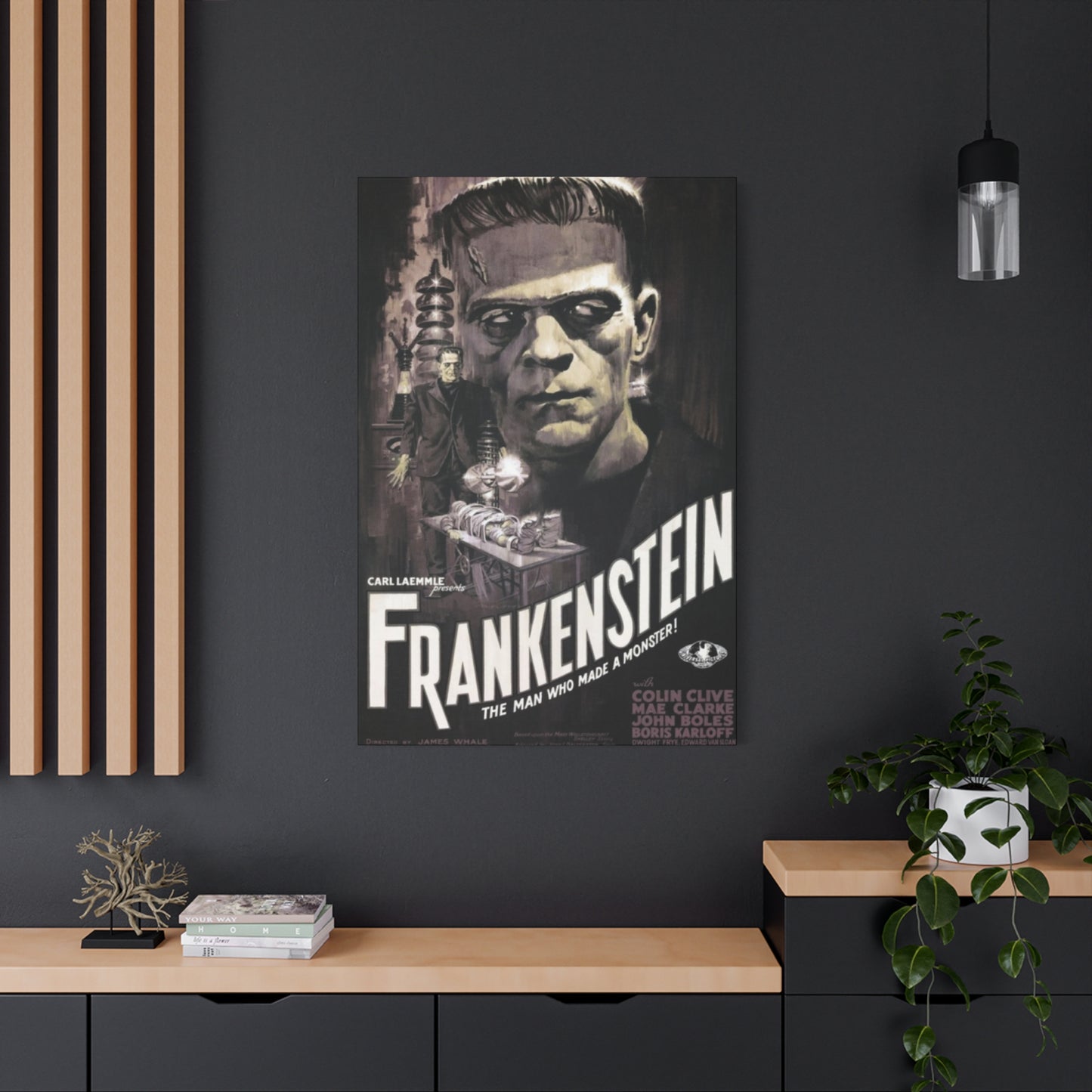
Frankenstein Poster Wall Art: A Timeless Tribute to Horror Cinema
The enduring appeal of monster cinema has captivated audiences for nearly a century, with few characters achieving the iconic status of Mary Shelley's creation brought to life on the silver screen. Horror enthusiasts and movie collectors have discovered that incorporating cinematic monster imagery into their homes creates an atmosphere that celebrates both classic film history and personal passion for the macabre. This comprehensive exploration delves into the multifaceted world of horror movie memorabilia, examining how legendary monster films continue to influence contemporary home decoration trends.
The phenomenon of displaying movie-themed artwork has evolved far beyond simple fan appreciation, becoming a sophisticated form of artistic expression that bridges the gap between popular culture and fine art. Collectors and decorators alike have recognized that vintage horror movie imagery possesses a unique aesthetic quality that transcends its original commercial purpose, transforming promotional materials into coveted pieces of visual art.
Classic Horror Vibes with Monster Movie Artwork
The golden age of horror cinema produced some of the most visually striking promotional materials in film history. These vintage pieces capture the essence of an era when movie studios invested heavily in creating artwork that would both attract audiences and establish lasting visual identities for their monster characters. The atmospheric quality of these promotional materials reflects the sophisticated understanding of visual storytelling that characterized early Hollywood production.
During the 1930s and 1940s, studio artists developed a distinctive visual language that combined gothic romanticism with modernist design principles. This unique aesthetic approach resulted in promotional materials that functioned simultaneously as commercial advertisements and standalone works of art. The careful attention to typography, composition, and color palette evident in these vintage pieces demonstrates the high level of craftsmanship that characterized Hollywood's golden age.
Modern collectors appreciate these vintage horror promotional materials for their historical significance and artistic merit. The original lithographic printing techniques used to produce these materials created rich, textured surfaces that digital reproduction cannot fully replicate. Collectors often seek out original vintage pieces not only for their rarity but also for the tangible connection they provide to cinema's formative period.
The visual elements that define classic horror aesthetics continue to influence contemporary horror filmmaking and promotional design. The stark contrasts, dramatic lighting effects, and expressionistic compositions that characterized early monster movie artwork have become fundamental components of horror visual vocabulary. Contemporary horror filmmakers frequently reference these classic visual elements, creating a continuous thread that connects modern horror cinema to its historical roots.
Incorporating classic horror imagery into modern home decor requires careful consideration of color schemes, lighting, and spatial relationships. The dramatic visual impact of vintage monster movie artwork demands thoughtful placement to achieve maximum aesthetic effect without overwhelming the surrounding environment. Successful integration of these powerful visual elements requires understanding both the historical context of the imagery and the principles of contemporary design.
The psychological impact of classic horror imagery extends beyond mere aesthetic appreciation. These iconic images tap into fundamental human responses to mystery, danger, and the unknown, creating emotional resonance that transcends cultural and generational boundaries. The continued popularity of classic monster imagery reflects its ability to evoke these primal responses while simultaneously providing a safe framework for exploring themes of mortality, transformation, and otherness.
Why Monster Movie Promotional Materials Maintain Eternal Appeal
The enduring popularity of classic monster movie promotional materials reflects several converging cultural and aesthetic factors that continue to resonate with contemporary audiences. These vintage pieces represent a unique intersection of commercial art, popular culture, and artistic expression that has proven remarkably durable across changing aesthetic trends and cultural shifts.
One significant factor contributing to their lasting appeal is the exceptional quality of the original artwork and design. During the golden age of Hollywood, movie studios employed talented artists who brought sophisticated artistic training to their commercial work. These professionals understood principles of composition, color theory, and visual storytelling that elevated their promotional materials far above mere advertising ephemera.
The historical significance of these pieces adds another layer of appeal for contemporary collectors and enthusiasts. These promotional materials serve as tangible artifacts of cinema history, providing direct connections to specific films, performers, and cultural moments. For many collectors, owning an original vintage horror movie promotional piece represents a form of historical preservation that keeps important cultural artifacts alive for future generations.
The scarcity of original vintage pieces has contributed to their increased desirability and market value. As time passes and original materials deteriorate or disappear, surviving examples become increasingly precious to collectors and institutions. This scarcity creates a sense of urgency among collectors while simultaneously elevating the status of these materials from commercial ephemera to valuable cultural artifacts.
Contemporary appreciation for mid-century design aesthetics has created renewed interest in vintage promotional materials from the 1930s through 1960s. Modern designers and decorators recognize the sophisticated visual sensibilities evident in these vintage pieces, appreciating their bold typography, striking color palettes, and confident compositional choices. This contemporary design trend has introduced classic horror imagery to new audiences who appreciate these pieces primarily for their aesthetic qualities.
The nostalgic appeal of classic monster movies continues to drive interest in related promotional materials. As contemporary horror cinema becomes increasingly reliant on digital effects and complex narratives, many enthusiasts find themselves drawn to the relative simplicity and directness of classic monster movies. The promotional materials for these films embody the same qualities of directness and visual impact that characterize the films themselves.
The crossover appeal between horror enthusiasts and art collectors has expanded the market for vintage monster movie promotional materials. Collectors who might not consider themselves horror fans nevertheless appreciate these pieces for their historical significance, artistic merit, and investment potential. This broader appeal has helped establish vintage horror promotional materials as legitimate collectibles within the broader art market.
Vintage Scares: Decorating with Classic Horror Promotional Materials
The integration of vintage horror promotional materials into contemporary home decoration requires careful consideration of both aesthetic and practical factors. Successfully incorporating these powerful visual elements demands understanding their historical context while adapting them to modern living environments. The dramatic imagery characteristic of classic horror promotional materials can create stunning focal points when properly integrated into thoughtful decorating schemes.
Color coordination represents a crucial aspect of successfully incorporating vintage horror imagery into modern homes. The rich, saturated colors typical of vintage promotional materials, particularly the deep blacks, blood reds, and golden yellows, can either complement or clash with existing color schemes. Successful integration often involves selecting pieces that share color elements with the existing decor or adjusting the surrounding color palette to accommodate the dramatic impact of the vintage imagery.
Lighting plays an essential role in displaying vintage horror promotional materials effectively. The dramatic imagery characteristic of these pieces responds well to carefully controlled lighting that enhances their atmospheric qualities without creating glare or washout. Many collectors invest in specialized picture lighting systems that allow for precise control over illumination levels and color temperature, ensuring optimal presentation of their vintage pieces.
The architectural context significantly influences the effectiveness of vintage horror promotional material displays. Gothic revival, Victorian, and mid-century modern architectural styles provide natural settings that complement the aesthetic qualities of classic horror imagery. However, even contemporary minimalist environments can successfully incorporate vintage horror elements when careful attention is paid to scale, placement, and surrounding negative areas.
Grouping and arrangement strategies require particular attention when displaying multiple vintage horror pieces. Creating effective gallery walls or groupings demands understanding the visual relationships between different pieces, considering factors such as size, color, subject matter, and historical period. Successful arrangements often follow principles borrowed from museum exhibition design, creating visual narratives that guide viewer attention while maintaining individual piece integrity.
The psychological impact of vintage horror imagery must be considered when planning room arrangements. While many enthusiasts enjoy the dramatic atmosphere created by horror-themed artwork, it is important to consider how these images might affect different household members and guests. Strategic placement can maximize the impact for enthusiasts while minimizing potential discomfort for those less attracted to horror imagery.
Conservation considerations become important when displaying valuable vintage promotional materials. Original lithographs and other vintage printing processes require protection from direct sunlight, excessive humidity, and temperature fluctuations. Many serious collectors invest in museum-quality framing and environmental controls to preserve their pieces for future generations while still enjoying daily viewing pleasure.
Monster Movie Memorabilia for Cinema Enthusiasts
The world of monster movie memorabilia extends far beyond simple promotional materials, encompassing a rich variety of artifacts that document the production, marketing, and cultural impact of classic horror films. Cinema enthusiasts who specialize in monster movie collecting often develop sophisticated understanding of film history, production techniques, and marketing strategies that informed the creation of these memorable films.
Production stills represent one of the most accessible and popular categories of monster movie memorabilia. These behind-the-scenes photographs provide intimate glimpses into the filmmaking process, revealing details about makeup techniques, set construction, and performer interactions that are not visible in the finished films. Collectors particularly prize production stills that show the transformation processes used to create iconic monster characters.
Lobby cards served as important marketing tools during the golden age of cinema, providing theater owners with standardized promotional materials to display in theater lobbies and entrances. These small-format promotional pieces often featured different scenes or imagery than the larger promotional materials, making them valuable additions to comprehensive collections. The standardized sizing and format of lobby cards makes them particularly suitable for creating cohesive display arrangements.
Press kits and promotional materials distributed to theater owners and entertainment journalists provide fascinating insights into studio marketing strategies and public relations campaigns. These materials often included detailed plot summaries, character descriptions, biographical information about performers and filmmakers, and suggested promotional activities for theater owners. Contemporary collectors value these materials for their historical significance and the unique perspective they provide on film industry practices.
Original movie scripts, when available, represent the ultimate collectible for serious monster movie enthusiasts. These documents provide direct connections to the creative process while often revealing differences between the original conception and the finished film. Script collecting requires significant expertise and financial resources, as authentic vintage scripts are extremely rare and command high prices in the collector market.
Costume pieces and makeup tests occasionally become available to collectors through estate sales and auction houses. These tangible artifacts provide physical connections to the filmmaking process that few other categories of memorabilia can match. However, authentication and preservation of these materials requires specialized knowledge and resources that place them beyond the reach of most casual collectors.
The development of reproduction and licensed merchandise has made monster movie imagery accessible to enthusiasts with more modest budgets. High-quality reproductions of vintage promotional materials allow fans to enjoy classic imagery without the expense and conservation concerns associated with original vintage pieces. However, serious collectors must develop expertise in distinguishing between original materials and later reproductions to make informed purchasing decisions.
Adding Retro Horror Elements to Modern Living Areas
The successful integration of retro horror elements into contemporary living environments requires careful balance between dramatic visual impact and everyday functionality. Modern homeowners who appreciate classic horror aesthetics must navigate the challenge of incorporating bold, often dark imagery into living areas that serve multiple purposes and accommodate diverse preferences among household members and guests.
The concept of accent walls has proven particularly effective for incorporating retro horror elements into modern living areas. By dedicating a single wall to horror-themed artwork or imagery, homeowners can create dramatic focal points without overwhelming the entire room. This approach allows for bold visual statements while maintaining overall room balance and functionality.
Color psychology plays a crucial role in successfully integrating retro horror elements into modern homes. The dark, saturated colors typical of classic horror imagery can create feelings of intimacy and drama when used judiciously, but may become oppressive if used excessively. Successful integration often involves using horror imagery as dramatic accents within lighter, more neutral color schemes that provide visual relief and balance.
Furniture selection and arrangement must consider the visual weight and impact of retro horror artwork. Dark, dramatic imagery can make rooms feel smaller and more enclosed, requiring careful attention to furniture scale, lighting levels, and traffic flow patterns. Many successful installations pair retro horror elements with lighter furniture pieces and strategic lighting to maintain room openness and functionality.
Textural considerations become important when incorporating retro horror elements into modern living areas. The smooth surfaces and clean lines typical of contemporary furniture and architecture can create interesting contrasts with the rich textures and dramatic imagery of vintage horror promotional materials. This contrast can enhance both the modern elements and the vintage pieces when carefully orchestrated.
The seasonal nature of horror appreciation presents unique challenges for permanent decorating schemes. While dedicated horror enthusiasts may enjoy year-round display of their collections, many homeowners prefer to reserve horror elements for seasonal displays around Halloween. Flexible display systems that allow for easy rotation of artwork and decorative elements provide solutions for accommodating these varying preferences.
Lighting design becomes particularly critical when incorporating retro horror elements into modern living areas. The dramatic imagery characteristic of classic horror promotional materials requires careful lighting to achieve optimal visual impact without creating harsh contrasts or uncomfortable viewing conditions. Many homeowners invest in adjustable lighting systems that allow for different illumination scenarios depending on the occasion and desired atmosphere.
Monster Movie Artwork for Home Entertainment Areas
Home theater and entertainment areas provide ideal settings for displaying monster movie artwork, as these environments already focus attention on cinematic experiences and visual storytelling. The controlled lighting conditions and focused viewing orientation typical of home theaters complement the dramatic visual qualities of classic horror promotional materials while providing appropriate contexts for their subject matter.
The scale considerations that govern home theater design align well with the bold, attention-grabbing qualities of monster movie promotional materials. Large-format reproductions of vintage promotional materials can serve as dramatic focal points in home theaters without competing with screen displays for viewer attention. The theatrical nature of these environments makes them perfect showcases for the dramatic visual impact of classic horror imagery.
Sound isolation requirements in many home theaters create opportunities for using vintage horror promotional materials as acoustic treatment elements. When properly mounted and framed, large-format reproductions can contribute to sound absorption while providing visual interest during non-viewing periods. This dual functionality makes monster movie artwork particularly appropriate for home theater installations.
The dim lighting conditions typical of home theaters require special consideration when selecting and displaying monster movie artwork. Pieces with strong contrast and bold imagery remain visible and impactful under low-light conditions, while more subtle or detailed pieces may lose their effectiveness. Many home theater enthusiasts invest in specialized artwork lighting systems that allow for independent control of display illumination.
Thematic coordination between displayed artwork and viewed content can enhance the overall entertainment experience. Home theater owners who regularly watch classic horror films often find that surrounding monster movie artwork creates immersive environments that enhance viewing pleasure. This thematic consistency can transform routine movie watching into more engaging, atmospheric experiences.
The technical requirements of home theater installations often limit available wall areas for artwork display. Cable management, speaker placement, and ventilation requirements can constrain display options, requiring careful planning to achieve effective artwork integration. Many successful installations incorporate artwork display considerations into initial design phases to ensure optimal results.
Storage and rotation capabilities become important considerations for home theater monster movie artwork displays. Many enthusiasts enjoy rotating their displays to match seasonal themes or specific film screening schedules. Built-in storage and easy rotation systems allow for flexible display options while protecting valuable pieces when not on display.
Ideal Gifts for Horror Entertainment Enthusiasts
The gift-giving market for horror entertainment enthusiasts represents a specialized niche that requires understanding both the recipient's specific interests and the broader cultural context of horror appreciation. Successful gift selection for horror fans demands knowledge of film history, collectible markets, and individual taste preferences that can vary significantly even among dedicated enthusiasts.
Original vintage promotional materials represent premium gifts for serious horror collectors, but require significant expertise and financial resources to select appropriately. The rarity, condition, and authentication issues surrounding vintage pieces make them challenging gifts for non-experts to select confidently. However, when properly chosen, original vintage pieces can become treasured additions to established collections.
High-quality reproductions provide more accessible gift options that still deliver visual impact and emotional satisfaction for horror enthusiasts. Modern printing technologies can produce reproductions that capture much of the visual appeal of original vintage pieces while remaining affordable for casual gift-giving occasions. However, gift-givers must clearly distinguish between reproductions and originals to avoid misrepresentation.
Limited edition prints and contemporary interpretations of classic monster imagery offer unique gift opportunities that combine nostalgic appeal with modern artistic sensibilities. Many contemporary artists create limited edition pieces inspired by classic horror films, providing fresh perspectives on familiar themes while maintaining collectible value and artistic integrity.
Framing and presentation services can transform modest gifts into impressive presentations. Professional framing services specializing in movie memorabilia understand the specific requirements for displaying different types of promotional materials and can create custom presentations that enhance the perceived value and visual impact of gifts. Quality framing can make even reproduction pieces feel substantial and valuable.
Educational materials and reference books complement physical gifts while providing lasting value for horror enthusiasts interested in deepening their knowledge and appreciation. Books covering film history, monster makeup techniques, and poster design provide contexts that enhance enjoyment of physical collectibles while serving as independent sources of entertainment and information.
Experience gifts such as horror film festivals, museum exhibitions, or specialized tours can provide memorable experiences for horror enthusiasts while avoiding the challenges of selecting specific physical items. These experiential gifts often create lasting memories while introducing recipients to new aspects of horror culture and history that they might not discover independently.
Professional Framing Techniques for Movie Promotional Materials
The proper framing of movie promotional materials requires specialized knowledge and techniques that differ significantly from standard artwork framing approaches. The unique characteristics of vintage promotional materials, including their printing processes, paper types, and historical significance, demand careful consideration of preservation requirements alongside aesthetic presentation goals.
Conservation framing techniques prioritize long-term preservation of valuable promotional materials while maintaining visual accessibility. These approaches typically involve acid-free matting materials, UV-protective glazing, and environmental sealing techniques that protect against atmospheric pollutants and humidity fluctuations. While conservation framing represents a significant investment, it provides essential protection for valuable vintage pieces.
The sizing and proportion challenges presented by vintage promotional materials often require custom framing solutions. Standard frame sizes rarely accommodate the unique dimensions of vintage lobby cards, window cards, and other promotional formats, necessitating custom cutting and assembly. Professional framers experienced in movie memorabilia understand these sizing challenges and can create appropriate solutions.
Matting considerations become particularly important when framing vintage promotional materials. The colors and textures of matting materials can either enhance or detract from the visual impact of the framed piece. Neutral colors typically provide safe choices, but carefully selected colored mats can create dramatic effects that complement the imagery while maintaining professional appearance standards.
Glazing options significantly impact both the preservation and presentation of framed promotional materials. Standard glass provides basic protection but may create glare issues that interfere with viewing. Museum-quality glazing options reduce glare while providing superior UV protection, but represent significant cost increases that must be weighed against the value and significance of the framed piece.
The mounting techniques used for vintage promotional materials must balance secure attachment with preservation requirements. Permanent mounting methods may damage valuable pieces, while reversible mounting techniques provide preservation benefits but may compromise visual presentation quality. Professional framers must evaluate each piece individually to determine appropriate mounting approaches.
Display lighting considerations should inform framing decisions from the beginning of the process. The placement of eventual display lighting may influence frame profile selections, glazing choices, and mounting techniques. Coordinating framing and lighting decisions ensures optimal final presentation results while avoiding costly modifications after installation.
Creating Atmospheric Room Environments with Classic Horror Elements
The transformation of ordinary living areas into atmospheric environments inspired by classic horror aesthetics requires comprehensive planning that extends beyond simple artwork placement to encompass lighting design, color coordination, furniture selection, and architectural modification. Successful atmospheric room creation demands understanding the psychological and visual principles that make classic horror imagery effective while adapting these principles to functional living environments.
Color palette selection forms the foundation of any successful horror-inspired room design. The deep blacks, blood reds, and golden yellows characteristic of classic horror promotional materials can serve as starting points for comprehensive room color schemes, but require careful modulation to maintain livability and visual balance. Many successful designs incorporate these dramatic colors as accent elements within more neutral base palettes.
Lighting design represents perhaps the most critical element in creating authentic horror atmosphere. The dramatic chiaroscuro effects characteristic of classic horror cinematography can be recreated through careful placement of accent lighting, dimmer controls, and strategic shadow creation. Multiple lighting layers allow for atmospheric flexibility while maintaining functional illumination for daily activities.
Architectural modifications can enhance the gothic atmosphere suggested by classic horror imagery. Crown molding, wainscoting, and other period architectural details can create appropriate contexts for vintage horror artwork while adding genuine historical character to modern homes. However, such modifications require significant investment and may not be appropriate for all living situations.
Furniture selection and arrangement must support the overall atmospheric goals while maintaining practical functionality. Dark wood pieces, vintage upholstery, and gothic-inspired accessories can complement horror artwork while providing comfortable, usable furniture. The key lies in balancing atmospheric elements with everyday comfort and functionality requirements.
Textural variety adds depth and interest to horror-inspired room designs. Velvet draperies, leather upholstery, wrought iron hardware, and other materials associated with gothic and Victorian design traditions can create rich, layered environments that support vintage horror artwork while providing tactile interest and visual complexity.
Accessory selection allows for subtle horror theme reinforcement without overwhelming the overall design scheme. Vintage books, candles, mirrors with ornate frames, and other period-appropriate accessories can enhance the atmospheric qualities of horror-inspired rooms while serving practical purposes. Careful accessory selection can tie together disparate elements into cohesive design statements.
Gothic Aesthetics Meeting Popular Culture Elements
The intersection of gothic aesthetic traditions with popular culture elements creates fascinating hybrid design approaches that honor both historical gothic design principles and contemporary entertainment preferences. This convergence allows modern enthusiasts to create sophisticated environments that reference classical gothic traditions while celebrating specific aspects of popular culture, particularly monster movies and horror entertainment.
Historical gothic design elements provide rich source material for contemporary interpretation. Gothic architecture's emphasis on vertical lines, pointed arches, and dramatic contrasts translates effectively into modern home decorating contexts when properly adapted for scale and function. These classical elements can provide sophisticated frameworks for displaying popular culture artifacts while maintaining design integrity and historical awareness.
The color theories underlying traditional gothic aesthetics align well with the visual requirements of classic horror promotional materials. Both traditions favor deep, saturated colors, dramatic contrasts, and rich textural variety that creates visually complex but harmonious environments. This natural affinity makes gothic aesthetic principles valuable guides for integrating horror imagery into sophisticated decorating schemes.
Furniture styles associated with gothic revival movements provide appropriate contexts for displaying monster movie memorabilia. Gothic revival furniture's emphasis on dark woods, elaborate carving, and medieval-inspired forms creates natural partnerships with vintage horror imagery while maintaining the dignity and sophistication necessary for formal living environments.
Contemporary interpretations of gothic aesthetics often incorporate modern materials and manufacturing techniques while maintaining traditional design principles. Steel, glass, and modern composites can create gothic-inspired forms that complement vintage horror artwork while providing the durability and functionality required for contemporary living. This hybrid approach allows for authentic gothic atmosphere without sacrificing modern convenience.
The psychological impacts of gothic design elements align well with the emotional responses sought by horror entertainment enthusiasts. Both traditions seek to create environments that inspire contemplation of mortality, mystery, and the sublime while providing safe frameworks for exploring potentially disturbing themes. This shared psychological territory makes gothic aesthetics natural partners for horror entertainment themes.
Lighting design principles derived from gothic architecture translate effectively into contemporary home environments. The dramatic interplay of light and shadow characteristic of gothic cathedrals can be recreated through careful placement of accent lighting and strategic use of architectural elements to create shadow patterns. These lighting effects enhance both gothic architectural details and horror artwork displays.
Historical Development of Monster Cinema Promotional Art
The evolution of monster cinema promotional art reflects broader changes in printing technology, marketing strategies, and popular culture aesthetics that occurred throughout the twentieth century. Understanding this historical development provides valuable context for contemporary collectors and enthusiasts while revealing the artistic and commercial forces that shaped the visual language of horror entertainment marketing.
The earliest monster movie promotional materials drew heavily from theatrical poster traditions established during the nineteenth century. These early pieces emphasized dramatic typography, bold color contrasts, and sensational imagery designed to attract attention in crowded urban environments. The transition from legitimate theater marketing to movie promotion required adaptation of these established techniques to accommodate the unique characteristics of filmed entertainment.
The development of lithographic printing technology during the early twentieth century enabled the production of promotional materials with unprecedented color quality and detail. Lithography's ability to reproduce subtle color gradations and fine detail allowed promotional artists to create sophisticated imagery that captured the atmospheric qualities of the films themselves while maintaining the bold visual impact necessary for effective advertising.
Studio system influence significantly shaped the development of monster movie promotional art during Hollywood's golden age. Major studios maintained in-house art departments staffed with talented illustrators who developed distinctive house styles that became associated with particular studio brands. These artists often worked closely with film producers and directors to create promotional imagery that accurately represented the films' visual and thematic content.
The rise of specialized horror film production companies during the 1950s and 1960s introduced new aesthetic approaches to monster movie promotional art. Independent producers often worked with smaller budgets but greater creative freedom, resulting in promotional materials that emphasized innovation and artistic experimentation over polished studio production values. This period produced some of the most visually striking and collectible horror promotional materials.
Technological advances in printing and reproduction throughout the mid-twentieth century gradually transformed the production and distribution of movie promotional materials. Offset printing, photographic reproduction techniques, and eventually digital production methods each introduced new possibilities while creating challenges for artists trained in traditional methods. These technological transitions created distinct periods in promotional art history that collectors recognize and value differently.
The decline of traditional movie theater exhibition during the later twentieth century reduced demand for traditional promotional materials while creating new markets for collector-oriented reproductions and merchandise. Contemporary promotional art serves different functions than historical pieces, focusing more on merchandise sales and collector markets than traditional theater advertising applications.
Iconic Visual Elements: The Continuing Power of Classic Monster Imagery
The enduring effectiveness of classic monster imagery stems from its successful combination of universal psychological themes with distinctive visual elements that remain immediately recognizable across cultural and generational boundaries. These iconic images have transcended their original commercial purposes to become integrated into broader cultural consciousness, continuing to evoke powerful emotional responses decades after their initial creation.
Psychological research suggests that classic monster imagery taps into fundamental human responses to threat, otherness, and transformation that operate below conscious awareness levels. The visual elements that make monster imagery effective—dramatic contrasts, exaggerated proportions, and symbolic transformation motifs—correspond to psychological trigger mechanisms that evolved to help humans identify and respond to potential dangers in their environments.
The symbolic content embedded within classic monster imagery continues to resonate with contemporary audiences facing different but related anxieties. The transformation themes central to monster narratives speak to ongoing human concerns about identity, control, and social acceptance that remain relevant regardless of technological or cultural changes. This symbolic relevance ensures continued emotional engagement with classic monster imagery.
Visual composition techniques employed in classic monster promotional art demonstrate sophisticated understanding of attention-getting and emotional manipulation strategies. The strategic use of scale, contrast, and color creates visual hierarchies that guide viewer attention while building emotional intensity. Contemporary designers continue to study and adapt these techniques for modern applications.
The typography and lettering styles associated with classic monster promotional materials have become integral components of horror visual vocabulary. The dramatic, often hand-lettered typography used in vintage promotional materials conveys atmosphere and emotional tone that complement the imagery while contributing to overall visual impact. Contemporary horror productions frequently reference these typographic traditions.
Color symbolism embedded in classic monster imagery operates across cultural boundaries to create universal emotional associations. The deep reds, blacks, and pale yellows typical of monster movie promotional materials trigger psychological responses associated with danger, death, and disease that remain consistent across different cultural contexts. This universal color symbolism contributes to the cross-cultural effectiveness of classic monster imagery.
The influence of classic monster imagery extends beyond entertainment applications into fashion, graphic design, and fine art contexts. Contemporary artists and designers continue to reference and reinterpret classic monster visual elements, creating ongoing cultural dialogues that keep these images active and relevant within broader artistic traditions.
Monochromatic Horror: Enduring Appeal of Black and White Presentations
The aesthetic power of black and white horror imagery transcends simple nostalgia to tap into fundamental visual and psychological principles that make monochromatic presentations uniquely effective for horror themes. The deliberate elimination of color forces attention toward composition, contrast, and form while creating atmospheric effects that often prove more unsettling than full-color alternatives.
The psychological impact of black and white imagery stems partially from its association with documentary photography, newsprint, and other media formats traditionally associated with factual reporting. This unconscious association with "reality" can make black and white horror imagery feel more immediate and believable than color alternatives, despite its obvious artificiality. The contradiction between familiar documentary aesthetics and fantastic content creates cognitive dissonance that enhances unsettling emotional effects.
Technical considerations favor black and white presentations for certain types of horror imagery. The high contrast ratios achievable in monochromatic printing can create dramatic lighting effects and shadow patterns that might be diluted or distracted by color elements. Many classic monster movie promotional materials were originally designed for black and white newspaper reproduction, making monochromatic presentation authentic to their original conception and production.
The timeless quality associated with black and white imagery provides particular advantages for classic horror presentations. Color palettes can date imagery to specific periods and make it feel historical or obsolete, while black and white presentations maintain contemporary relevance regardless of changing color fashion trends. This temporal neutrality helps classic horror imagery remain current and engaging for contemporary audiences.
Printing and reproduction considerations often favor black and white presentations for practical and economic reasons. High-quality black and white reproduction requires less technical expertise and expensive equipment than accurate color reproduction, making monochromatic presentations more accessible for small-scale printing and personal reproduction projects. This practical advantage has helped maintain the popularity of black and white horror imagery among collectors and enthusiasts.
The artistic tradition of black and white photography and printmaking provides sophisticated aesthetic frameworks for appreciating monochromatic horror imagery. Collectors familiar with black and white fine art photography often appreciate the compositional sophistication and technical excellence visible in well-executed monochromatic horror promotional materials. This crossover appeal expands the audience for black and white horror imagery beyond dedicated genre enthusiasts.
Contemporary design trends frequently incorporate black and white elements to create sophisticated, minimalist aesthetics that complement modern architecture and furniture. Black and white horror imagery can integrate more easily into contemporary design schemes than colorful alternatives, making monochromatic presentations practical choices for modern home decoration applications.
Seasonal Halloween Decorating with Classic Monster Themes
Halloween decorating represents the most widespread application of classic monster imagery in contemporary American homes, creating annual opportunities for homeowners to experiment with horror aesthetics without committing to permanent decorative changes. The seasonal nature of Halloween decorating allows for bold, dramatic approaches that might be overwhelming in year-round applications while providing frameworks for testing longer-term decorative strategies.
The timing of Halloween decorating coincides with autumn color changes and shortened daylight hours that naturally complement the atmospheric qualities of classic monster imagery. The rich oranges, deep reds, and golden yellows of autumn foliage create natural color palettes that harmonize with vintage horror promotional materials while the earlier darkness of autumn evenings provides appropriate contexts for dramatic lighting effects.
Scale considerations become particularly important for Halloween decorating applications where temporary installations must create maximum visual impact within limited time and budget constraints. Large-format reproductions of classic monster promotional materials can create dramatic focal points for Halloween displays while remaining affordable and easy to install. The temporary nature of seasonal decorating allows for experimental approaches that might be too bold for permanent installations.
Outdoor Halloween decorating applications present unique challenges and opportunities for classic monster imagery. Weather resistance, visibility requirements, and neighborhood aesthetic considerations must be balanced against dramatic impact goals. Many successful outdoor installations use classic monster imagery as starting points for larger decorative themes that incorporate lighting effects, sound elements, and three-dimensional props.
The social aspects of Halloween decorating create opportunities for community engagement and shared appreciation of classic monster themes. Neighborhoods often develop informal competitions and traditions around Halloween decorating that encourage creativity and experimentation. Classic monster themes provide recognizable reference points that facilitate communication and appreciation across different age groups and cultural backgrounds.
Storage and preservation considerations become important for homeowners who invest in quality Halloween decorating materials intended for repeated annual use. Proper storage techniques can extend the useful life of reproduction promotional materials and other decorative elements while protecting investment value. Many serious Halloween decorators develop systematic storage and inventory systems that facilitate efficient annual installations.
The transition from Halloween decorating to year-round appreciation often begins with seasonal applications that prove particularly successful or personally meaningful. Homeowners who discover strong positive responses to Halloween horror displays may choose to incorporate selected elements into permanent decorating schemes, using seasonal experimentation as testing grounds for longer-term commitments.
Curating Gallery Walls with Horror Movie Promotional Materials
The creation of effective gallery walls featuring horror movie promotional materials requires sophisticated understanding of visual composition, thematic coherence, and spatial relationships that extend beyond simple arrangement of individual pieces. Successful gallery walls create unified visual experiences that enhance individual pieces while establishing broader narrative or aesthetic themes that guide viewer attention and interpretation.
Scale relationships among different pieces within gallery wall arrangements significantly impact overall visual effectiveness. Mixing different sizes of promotional materials requires careful attention to proportional relationships and visual weight distribution to maintain balance and prevent any single piece from overwhelming the arrangement. Successful arrangements often employ mathematical ratios and grid systems borrowed from professional exhibition design practices.
Color coordination strategies for gallery walls must account for the strong, often competing color elements typical of vintage horror promotional materials. Successful arrangements may group pieces with similar color palettes, create deliberate color contrasts for dramatic effect, or use neutral spacing elements to separate pieces with conflicting color schemes. The background wall color provides another variable that significantly impacts overall color relationships.
Thematic organization approaches can create narrative structures within gallery wall arrangements that enhance viewer engagement and understanding. Arrangements may organize pieces chronologically to show historical development, thematically to explore specific monster types or film studios, or aesthetically to demonstrate particular artistic approaches or design trends. Clear organizational principles help viewers navigate complex arrangements while preventing visual chaos.
Spacing and layout considerations require attention to both aesthetic and practical factors. Adequate spacing between pieces prevents visual crowding while accommodating different viewing distances and angles. Many successful gallery walls employ modular spacing systems that create visual rhythms while facilitating future rearrangement or expansion. Professional spacing guidelines borrowed from museum exhibition practices provide useful starting points for amateur arrangements.
Lighting design for gallery walls presents complex challenges that multiply with the number of displayed pieces. Uniform illumination across all pieces may flatten the arrangement's visual interest, while dramatic lighting variations may create unwanted hierarchies or visibility problems. Many successful installations employ track lighting systems that allow for individual piece adjustment while maintaining overall illumination consistency.
The integration of three-dimensional elements such as props, masks, or sculptural pieces can add depth and interest to primarily two-dimensional gallery wall arrangements. However, these additions require careful consideration of scale, lighting, and security factors that may complicate installation and maintenance. Mixed-media gallery walls often prove most successful when three-dimensional elements support rather than compete with two-dimensional focal pieces.
Classic Cinema Transformed into Contemporary Art Forms
The evolution of classic monster movie imagery from commercial advertising materials into recognized art forms reflects broader cultural trends that have elevated popular culture artifacts to fine art status. Contemporary artists, collectors, and cultural institutions increasingly recognize the artistic merit and historical significance of vintage promotional materials while developing new interpretive frameworks that honor both their original purposes and their artistic achievements.
The pop art movement of the 1960s and subsequent postmodern art trends established precedents for treating commercial imagery as legitimate artistic subject matter. Artists like Andy Warhol and Roy Lichtenstein demonstrated that commercial graphics could function as fine art when properly contextualized and presented. This artistic precedent provides frameworks for appreciating vintage horror promotional materials as art objects rather than mere commercial ephemera.
Contemporary printmaking techniques enable artists to create new works inspired by classic monster imagery while employing traditional fine art production methods. Lithography, screen printing, and etching processes can reproduce or reinterpret vintage promotional imagery within fine art contexts that emphasize craftsmanship and artistic interpretation over commercial reproduction. These contemporary works bridge the gap between popular culture appreciation and fine art collecting.
Gallery representation and museum exhibition of movie promotional materials has established institutional validation for their artistic significance. Major museums now regularly include movie promotional materials in exhibitions covering design history, popular culture, and American art topics. This institutional recognition provides scholarly frameworks for understanding promotional materials as cultural artifacts worthy of preservation and study.
The investment market for vintage promotional materials has developed sophisticated valuation criteria that consider artistic merit alongside rarity, condition, and historical significance. Auction houses, dealer galleries, and specialized publications have created market infrastructure that supports serious collecting while educating newcomers about quality and authenticity issues. This market development has elevated promotional materials from casual collectibles to serious investment opportunities.
Contemporary artists continue to create new works inspired by classic monster imagery, ensuring ongoing cultural relevance for these iconic images. These contemporary interpretations often employ modern materials and techniques while referencing classic visual elements, creating dialogues between historical and contemporary artistic traditions. Such works introduce classic monster imagery to new audiences while providing fresh perspectives for established enthusiasts.
The academic study of popular culture has developed sophisticated analytical frameworks for understanding the artistic and cultural significance of movie promotional materials. Universities now offer courses in popular culture studies, design history, and film studies that treat promotional materials as primary source documents worthy of serious scholarly attention. This academic recognition provides intellectual foundations for appreciating promotional materials as cultural artifacts.
Conclusion
Frankenstein poster wall art stands as a timeless tribute to one of horror cinema’s most iconic and influential figures. Rooted in Mary Shelley’s classic tale and immortalized through countless adaptations, Frankenstein’s monster continues to captivate audiences with its blend of tragedy, terror, and thought-provoking themes. Incorporating this legendary imagery into your home or entertainment space not only celebrates the rich history of horror cinema but also adds a dramatic and nostalgic flair that resonates across generations.
One of the key reasons Frankenstein poster wall art remains enduringly popular is its unique ability to evoke a wide range of emotions. The monster’s haunting visage, often depicted with somber expression and striking features, symbolizes both the fear of the unknown and the tragedy of misunderstood creation. This duality invites viewers to reflect on deeper questions of humanity, identity, and the consequences of scientific ambition—making Frankenstein more than just a horror icon but a powerful cultural metaphor.
Visually, Frankenstein posters offer a striking aesthetic that complements a variety of interior styles. Whether featuring vintage black-and-white imagery, bold graphic designs, or stylized reinterpretations, these posters bring a touch of classic horror to spaces like home theaters, living rooms, or themed bars. Their dramatic contrasts and iconic visuals create a compelling focal point that sparks conversation and nostalgia, perfect for fans of the genre or those looking to add an edgy, retro vibe to their décor.
Furthermore, Frankenstein poster wall art appeals not only to horror aficionados but also to art collectors and pop culture enthusiasts. The monster’s image has transcended its cinematic origins to become a symbol of rebellion, creativity, and the complex interplay between science and ethics. Displaying this artwork connects viewers to a rich narrative tradition and a cultural legacy that continues to inspire filmmakers, artists, and audiences alike.
In addition to personal enjoyment, Frankenstein wall art makes a thoughtful gift for horror lovers and cinephiles. Whether for Halloween, birthdays, or special occasions, these posters offer a unique way to honor a shared passion for classic horror storytelling and cinematic history.
In conclusion, Frankenstein poster wall art is a timeless homage to horror cinema’s enduring power and allure. It combines striking visuals, rich symbolism, and cultural significance to create a captivating addition to any space. By embracing this iconic imagery, you celebrate the legacy of Frankenstein while adding bold, evocative character to your home.



















